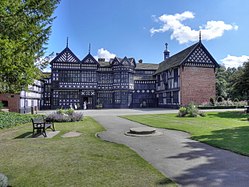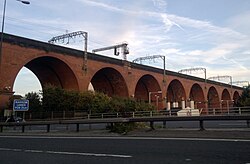
Nelstrops Albion Flour Mills, also known as Nelstrop Albion Corn Mill, Nelstrop's Flour Mill or Albion Mills, is a corn mill in Heaton Norris, Stockport, England. It is at the top of Lancashire Hill, on the roundabout next to the Navigation Inn. Nelstrops, the company which operates the mills, is one of the leading producers of flour in the United Kingdom.






